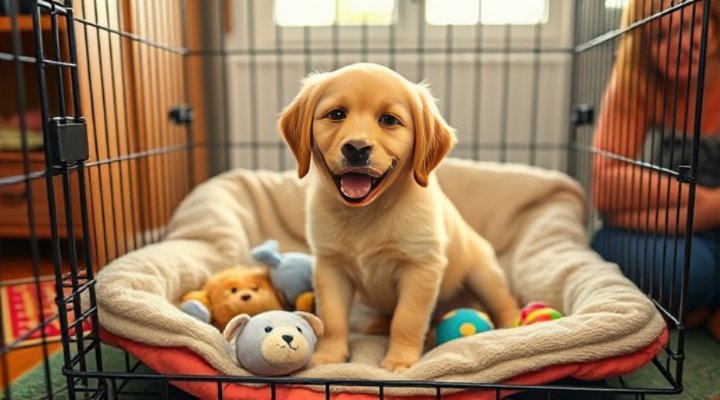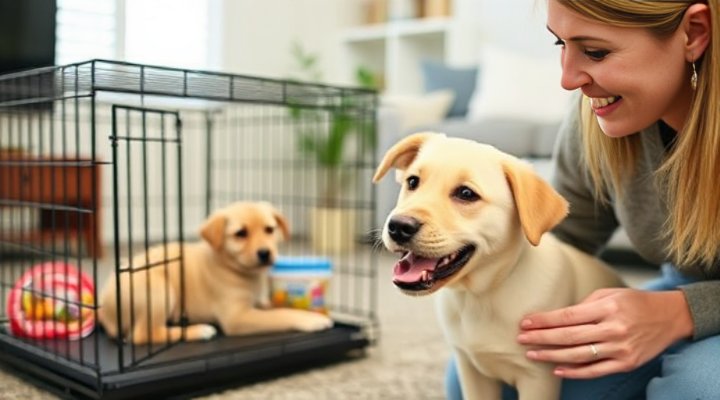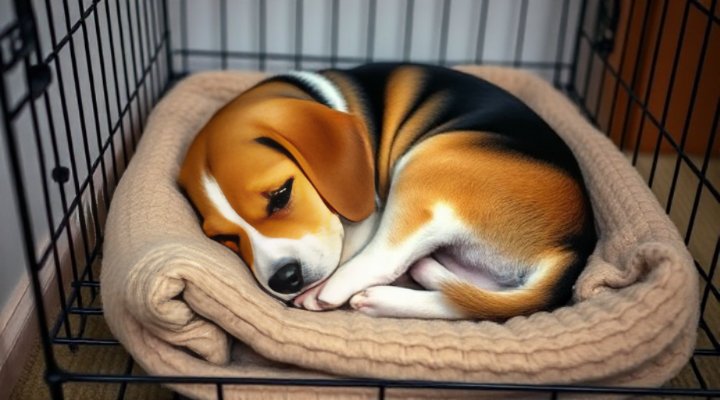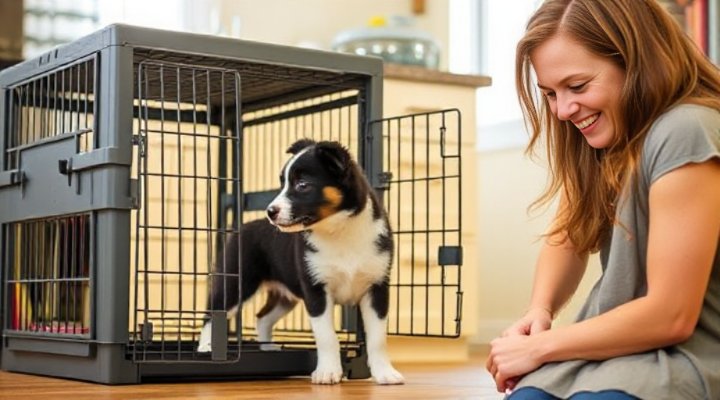Crate training is one of the most effective ways to ensure your puppy feels safe and secure. Above all, it’s important to make the crate a positive space. For example, you can start by placing treats and toys inside to encourage your puppy to explore. Meanwhile, avoid forcing your puppy into the crate, as this can create negative associations.

Why Crate Training is Beneficial for Your Puppy
Crate training provides numerous benefits for both you and your puppy. Firstly, it helps with housebreaking, as puppies naturally avoid soiling their sleeping area. Secondly, it offers a safe space where your puppy can retreat when feeling overwhelmed. Consequently, crate training can reduce anxiety and destructive behaviors.
If you’re looking for more tips on puppy training, check out our guide on Best Online Puppy Training Courses.

Step-by-Step Puppy Crate Training Tips
1. Choose the Right Crate
The first step in crate training is selecting the appropriate crate. In other words, it should be large enough for your puppy to stand, turn around, and lie down comfortably. However, it shouldn’t be too big, as this can encourage accidents.
2. Introduce the Crate Gradually
Next, introduce the crate slowly. Place it in a common area where your puppy spends time. Subsequently, encourage your puppy to enter by tossing treats inside. Most importantly, keep the door open initially to avoid any feelings of confinement.
3. Use Positive Reinforcement
Positive reinforcement is key to successful crate training. For instance, praise and reward your puppy whenever they enter the crate voluntarily. Similarly, you can feed meals near the crate to create positive associations.
For more detailed training techniques, visit the American Kennel Club’s guide on crate training.

Common Crate Training Mistakes to Avoid
While crate training is highly effective, there are common pitfalls to avoid. Firstly, never use the crate as punishment. Secondly, don’t leave your puppy in the crate for extended periods. Puppies need frequent breaks for potty and play.
Additionally, ensure the crate is comfortable. A soft bed and a few toys can make a big difference. If you’re unsure about crate selection, our article on How to Choose the Right Pet Crate can help.

Making the Crate a Happy Place
To make the crate a favorite spot for your puppy, incorporate it into daily routines. For example, use the crate during nap times or when you’re briefly away. Likewise, keep the crate in a quiet but social area so your puppy doesn’t feel isolated.
Remember, patience is crucial. Some puppies adapt quickly, while others may take weeks. Either way, consistency and positive reinforcement will yield the best results.
Final Thoughts on Puppy Crate Training
In conclusion, crate training is a valuable tool for raising a well-adjusted puppy. By following these puppy crate training tips, you’ll create a safe and happy space for your furry friend. For more training advice, explore our Dog Training Commands Every Owner Should Know.
Related Keywords: puppy crate training, dog crate training, crate training tips, how to crate train a puppy, best crate for puppies
